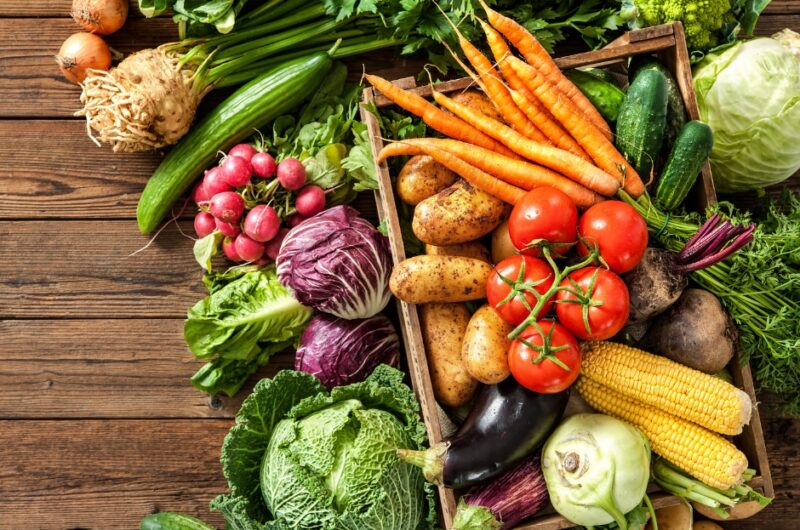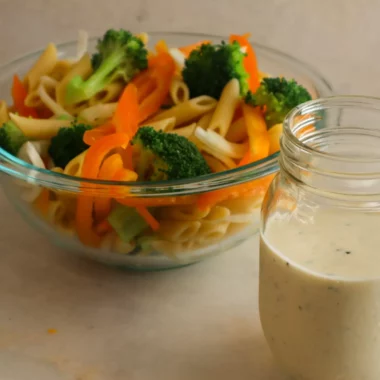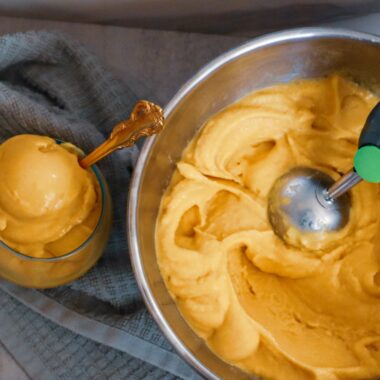Staying hydrated during the summer is essential. It is hot, after all, which can increase your risk of dehydration. However, staying hydrated can be challenging for some people.
Water seems bland, so they often drink sugar-sweetened beverages, which aren’t necessarily the best for your overall health.
There are other ways to stay hydrated, even if you don’t like water. Vegetables have a high water content. So you can eat or drink them to stay hydrated.
Why Is Hydration Is Important
Water helps you feel good. Water helps control the body’s temperature and removes waste from the body. Water also helps prevent infections and transports nutrients to the body.
Water also affects your mental health. You may have trouble sleeping, recalling and processing information, or experience a negative mood, if you do not drink enough water.
How Do I Know When I’m Dehydrated
Dehydration is a condition that occurs if your body loses more fluids than you ingest. Your body will show you when you are dehydrated. Common symptoms of dehydration include dry mouth, dark-colored urine with a strong smell, headaches, constipation, dull skin, taking fewer pee breaks, and fatigue.
How Much Water Should I Drink A Day
The amount of water you should drink depends on several factors, including weight and level of activity. The US National Academies of Sciences, Engineering, and Medicine suggests that men drink 15.5 cups of fluids daily. In contrast, women should drink 11.5 cups of fluids a day.
All of these fluids do not have to be water. You can drink tea, still, sparkling, or infused water, coffee, or healthy sugar-free juices. Additionally, your body can obtain water from foods.
12 Vegetables That Keep You Hydrated
Drinking fluids like water is the easiest way to stay hydrated. But sometimes, drinking all that water can get a little boring. Luckily you can stay hydrated by eating these 12 vegetables.
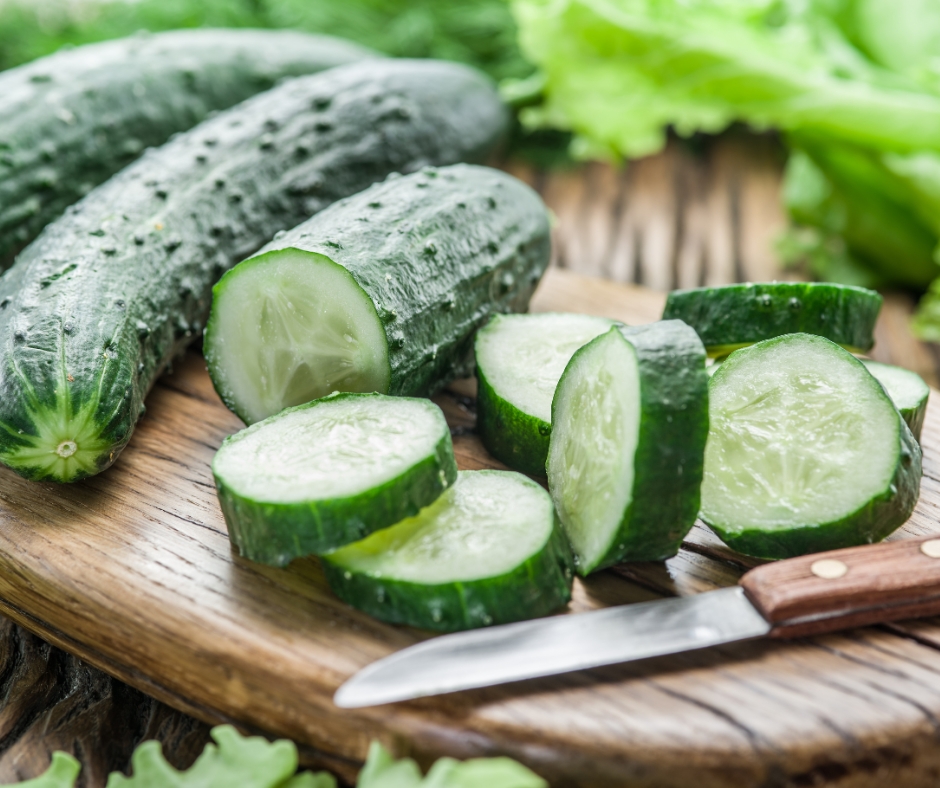
Cucumbers
Technically cucumbers are a fruit, but they are treated as a vegetable, so we added them to the list.
Cucumbers contain the most water of all vegetables and fruits. Cucumbers contain 96% water. They are packed with nutrients like vitamins and fiber. Plus, they are low-calorie, so you can enjoy them without feeling guilty.
You can use cucumbers to make cucumber coconut water or tomato cucumber salad. You can also add cucumbers to add them to a side salad, cucumber salad, or cucumber sandwiches.
Iceberg Lettuce
Iceberg lettuce contains 95%-96% water. Iceberg lettuce has earned a bad reputation for not having as many nutrients as other types of lettuce.
However, iceberg lettuce contains fiber, which boosts digestion, essential minerals like magnesium, phosphorus, and potassium, as well as vitamins A and K. So you are still getting a ton of nutrients when you eat iceberg lettuce. You can use iceberg lettuce as a base for a salad or to make Buddha bowls, pesto, BLT pasta salad, and lettuce wraps.
Zucchini And Summer Squash
Zucchini and summer squash contain 95% water. Both zucchini and summer squash are low-calorie foods.
One cup of sliced zucchini contains 20 calories, while 1 cup of sliced summer squash contains 19 calories. Zucchini and summer squash contain vitamin C, which helps maintain healthy skin, bones, and cartilage and helps keep your cells healthy.
You can sauté or grill zucchini and summer squash or use them to make a gratin and zucchini squash bread.
Celery
Celery consists of 95% water. One serving of celery (2 medium stalks) is almost equivalent to half a cup of water. Celery is a fiber-rich versatile vegetable that can be added to chicken salad, dipped into hummus or ranch dressing, or smeared with peanut butter.
Radish
Radishes contain 94% water. Radishes are loaded with antioxidants that fight free radicals in the body and decrease damage caused by oxidation.
You can roast or pickle radishes. Additionally, you can also shave radishes into super thin pieces to make a salad.
Tomatoes
Tomatoes contain approximately 94% of water. There are many varieties of cherry tomatoes you can choose from.
For example, you can eat small or grape cherry tomatoes as a snack. You can use vine-ripened tomatoes to make bruschetta or add a few slices of a large beefy or heirloom tomato to a side salad.
Green Cabbage
Green cabbage contains 92% water. Cabbage is low-calorie food that contains a ton of fiber which will keep you fuller longer, as well as nutrients like vitamins and minerals that are beneficial for the body. You can use cabbage to make coleslaw or steamed cabbage.
Cauliflower
Fresh cauliflower contains 92 to 94% water. One cup of cauliflower can contain nearly 1/4 cup of water. If you are ricing cauliflower to make cauliflower bread, you will notice about 1 1/2-2 cups of water is left in the bowl after you squeeze the water from the cauliflower.
Cauliflower is another low-calorie, low-carb vegetable with many nutrients, including vitamin C, phenolic compounds, and vitamin E, allowing cauliflower to have anticarcinogenic and antioxidant effects. You can use cauliflower to make roasted cauliflower steaks or florets, cauliflower rice, or mashed cauliflower.
Bell Peppers
Bell peppers contain 92% water. Bell peppers are a low-calorie, low-sugar food filled with fiber as well as vitamin C.
Vitamin C is essential for developing and repairing body tissue, creating blood vessels, and building collagen, a protein used for skin regeneration. You can eat bell peppers as a snack, add them to a side salad or pasta salad, or make stuffed bell peppers.
Spinach
Spinach contains 92% water. It contains nutrients that improve eyesight, prevent age-related macular degeneration and hemophilia, and regulate blood sugar.
You can sautéed spinach or use it as the base for a salad or Buddha bowl. You can also use spinach instead of lettuce in your sandwiches and wraps.
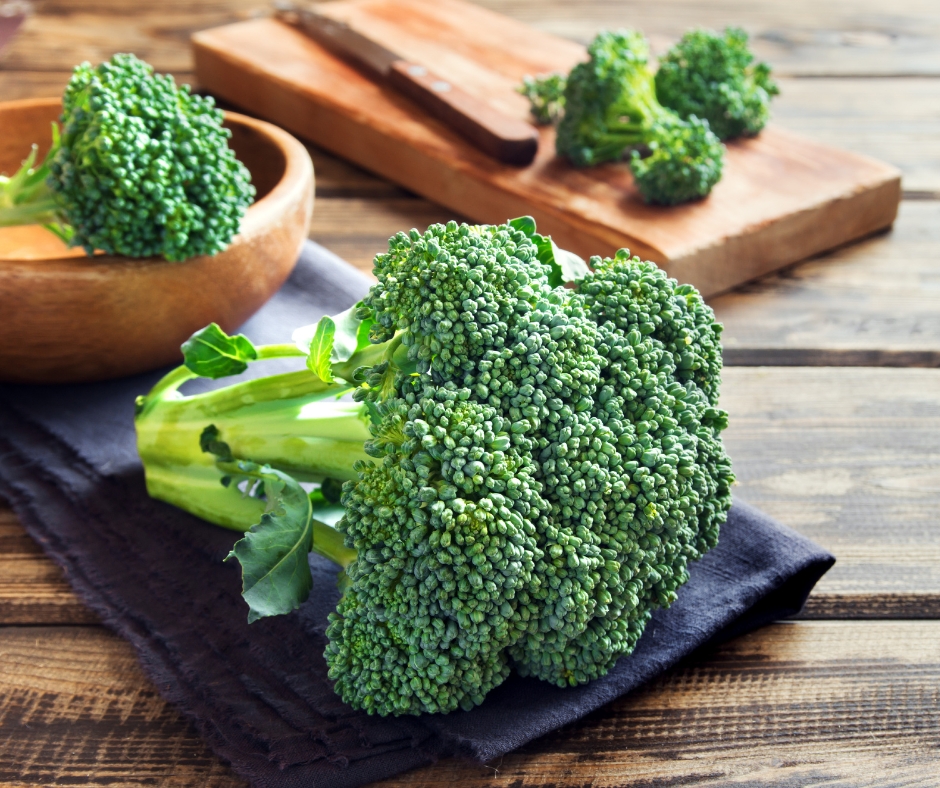
Broccoli
Broccoli contains 91% water. It is a cruciferous vegetable containing many nutrients.
Broccoli contains many nutrients like vitamins C, K, and B1, magnesium, selenium, phosphorus, omega-3 fatty acids, polyphenols, and other important nutrients. These nutrients give broccoli anticancer and antioxidant effects.
You can eat raw broccoli in a salad, make soup, steam, roast, or air fry broccoli florets.
Carrots
Carrots contain 86%-89% water. They are crunchy, slightly sweet and make the perfect snack or side dish.
Carrots are relatively low in calories, with 1 cup containing 50 calories. They contain phytochemicals that may decrease the risk of developing cancer and cardiovascular disease and decrease inflammation.
There are many ways to prepare carrots. You can eat them raw, air fry, roast, or saute carrots.
In Summation
Drinking fluids like water is essential to keeping your body hydrated. However, you can also get water by eating vegetables like cucumber, summer squash, and zucchini. Eating these vegetables and drinking enough fluids will ensure you stay hydrated this summer.

